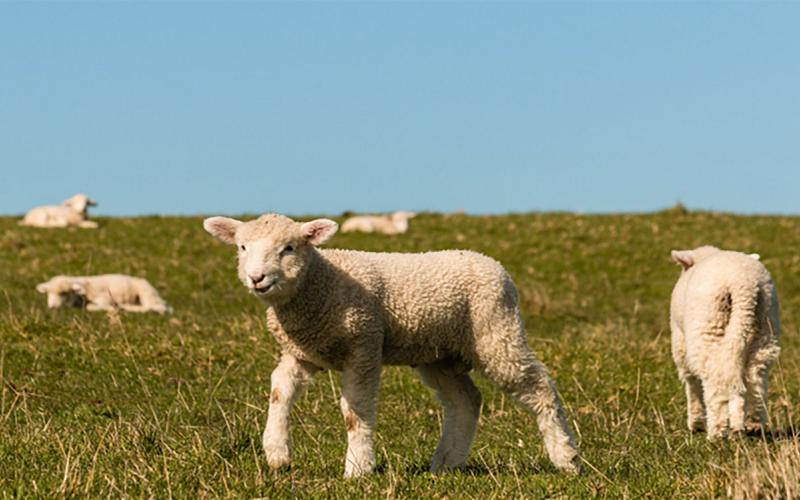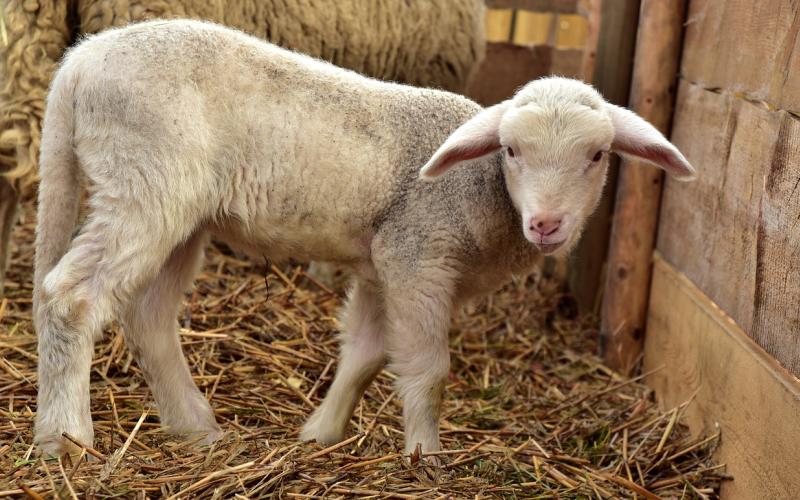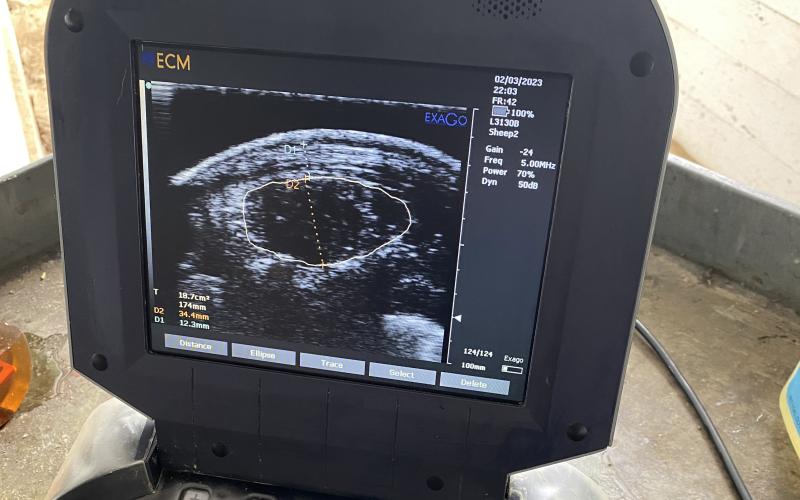Written with contributions by Kelly Froehlich, former Assistant Professor & SDSU Extension Sheep and Goat Specialist.
Determining when lambs should be harvested is critical for optimal quality and consumer satisfaction. For optimal quality, lambs should be harvested between 6 and 12 months of age with 0.25 inches of back fat (external fat over the 12th and 13th rib; USDA, 1992). With the end in mind, the ideal finish weight should be determined prior to putting lambs on feed.
Calculating Ideal Finishing Weights
To start, mature parental weights can be used to predict ideal finishing weight of offspring. Held (1999) discussed an equation originally developed by Bradford and others (UC Davis) on utilizing mature dam and sire weights to predict lamb weights corresponding with a yield grade 2 carcass. This equation takes the average weight of the parents and multiplies that value by 64 percent to predict the ideal finish weight of an individual lamb (Held, 1999). Using this equation, if a 170-pound Rambouillet ewe is bred to a 250-pound Rambouillet ram, the optimal slaughter weight of their offspring should be approximately 134 pounds (see Figure 1). Utilizing this simple equation based on ewe and ram weights can aid in estimating individual, optimal slaughter weights.
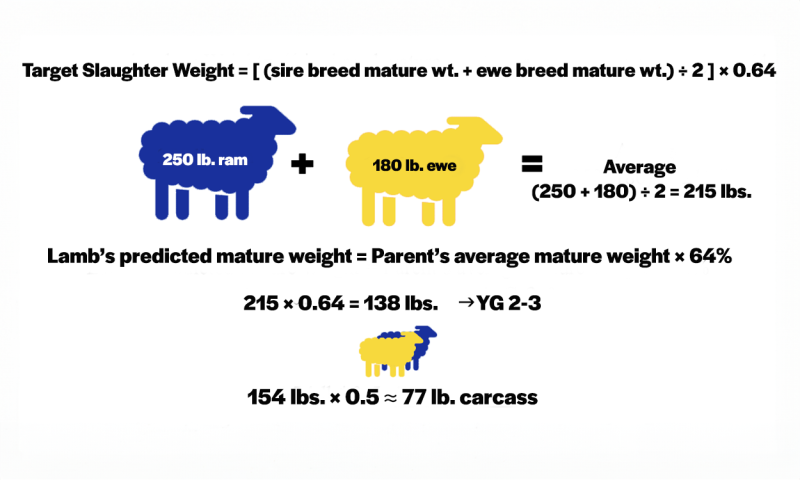
Traits Influencing Finish Weights
Projecting ideal finish weight by is also influenced by frame size, breed, and genetics. Frame size greatly influences when lambs are finished; smaller-framed breeds (for example, Dorper, Polypay, and Katahdin) have lower mature body weights and will reach the ideal muscle and back fat depth sooner than larger-framed breeds (for example, Suffolk and Rambouillet). Thus, smaller-framed sheep are typically harvested earlier and at lower weights. Larger frame size is associated with lower fat thickness, body-wall thickness, yield grade, and quality grade due to higher mature weights. The breed also influences how quickly an animal will reach optimal body composition. Heavier-muscled breeds (Texel, Suffolk, Ile de France, and others) will produce carcasses that are higher in lean muscle. These breeds can be produced as purebreds or crossed on lighter-muscled sheep to improve lamb quality as a terminal sire. Lighter-muscled (often wool or maternal breeds) typically take longer to reach optimal finish. Another factor that influences ideal finish weight is gender. Ewes tend to mature earlier and deposit fat sooner. On average, ewes can be harvested at approximately 5.5 pounds less than wethers (Tatum et al., 1998). Also keep in mind that lambs fed high-concentrate diets deposit higher levels of fat at a younger age and lower body weight than lambs on a forage diet. Regularly monitoring the growth and body condition of your lambs and keeping records of which lambs gain efficiently also improves the quality of your lamb products.
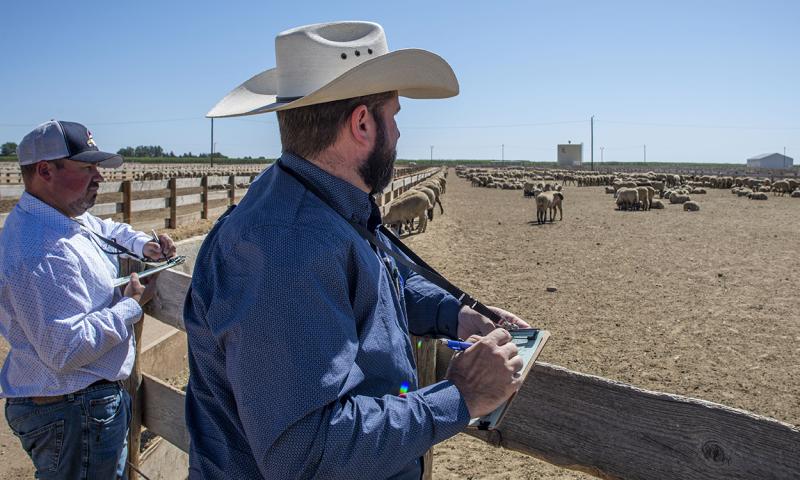
Feeding Considerations
As lambs grow, the rate at which they build muscle begins to slow down and their rate of fat deposition increases. At this point, the lamb becomes less feed efficient and the cost per additional pound of gain rises. Ideally, lambs should be harvested before this point to ensure adequate fat composition and promote economical feeding. Cost per pound of gain is simply the cost of the feed, divided by the weight gained by the animal. For example, if a lamb gains 80 pounds in 120 days, the rate of gain is 0.66 pounds per-day. If it costs $0.20 per-day to feed that lamb, the cost per pound of gain is $0.30 per pound of gain ($0.20 ÷ 0.66 pounds). If calculated regularly throughout the lamb’s feeding period, target slaughter weight will have been reached when the rate of gain slows and the cost per pound of gain rises.
Feeding lambs beyond optimal weight may lead to increased fat deposition as weight increases, resulting in a less-desirable eating experience for your customers. The ultimate goal of feeding lambs should be to maintain lambs that will meet consumer preferences, while simultaneously promoting profitability. Meeting this goal starts with knowing your ideal finish weight for the sheep that you raise.
References
- Held, J. 1999. Lamb Growth Efficiency and Optimum Finished Weight. South Dakota Sheep Field Day Proceedings and Research Reports.
- Tatum, J.D., M.S. DeWalt, S.B. LeValley, J.W. Savell, F.L. Williams. 1998. Relationship of feeder lamb frame size to feedlot gain and carcass yield and quality grades. J. Anim. Sci.
